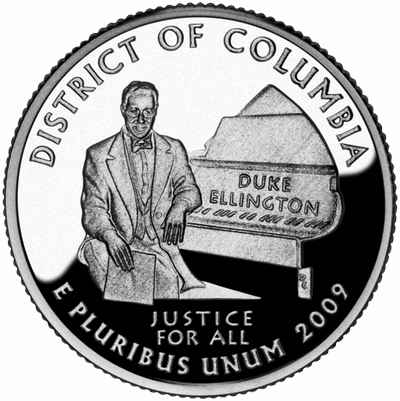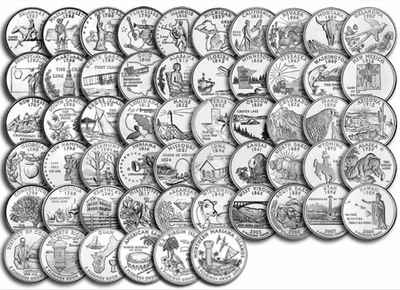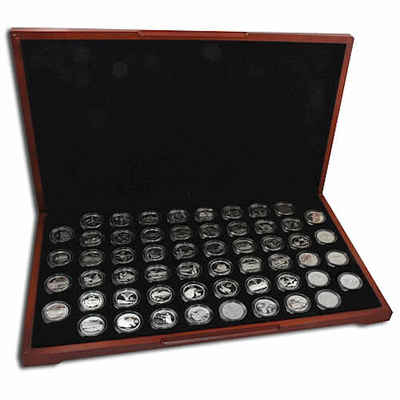
District of Columbia Quarter
District of Columbia Quarter of Washington, DC

Designed by Don Everhart
Released January 26, 2009
Washington, DC, the U.S. capital, is a compact city on the Potomac River, bordering the states of Maryland and Virginia. It’s defined by imposing neoclassical monuments and buildings – including the iconic ones that house the federal government’s 3 branches: the Capitol, White House and Supreme Court – but also its museums and performing-arts venues such as the Kennedy Center. The District of Columbia, created in 1790, became the Nation's capital on December 1, 1800. Residents of Washington were given the right to vote for president and vice president with the ratification of the 23rd Amendment in 1961. But the District of Columbia does not have statehood.
Mintage: 172,400,000
The District of Columbia quarter is the first of 2009 and the first in the District of Columbia and U.S. Territories Quarters Program. The District of Columbia Quarter was released on January 26, 2009, featuring Duke Ellington seated at a grand piano. Caption: "Duke Ellington" and "Justice for all"
Washington, DC - District of Columbia Quarter
The District of Columbia quarter is the first of 2009 and the first in the District of Columbia and U.S. Territories Quarters Program.The District of Columbia, created in 1790, became the Nation's capital on December 1, 1800. The 10-square-mile site, originally part of Maryland and Virginia, was chosen personally by President George Washington to fulfill the need for a new Federal district that would not be part of any state. The District of Columbia quarter reverse features native son Duke Ellington, the internationally renowned composer and musician, seated at a grand piano with the inscriptions, DISTRICT OF COLUMBIA, DUKE ELLINGTON and JUSTICE FOR ALL, the District's motto.
Edward Kennedy "Duke" Ellington was born into a middle-class family in Washington, D.C., in 1899, and started piano lessons at the age of seven. He lived in Washington until 1923, when he moved to New York City. He began performing professionally at the age of 17, and once he arrived in New York, started playing in Broadway nightclubs and eventually led his own band.Ellington made hundreds of recordings- some with John Coltrane, Billy Strayhorn, Louis Armstrong and Ella Fitzgerald- making him famous worldwide. Throughout his 50-year career, he returned often to Washington to perform, frequently staying at the Whitelaw Hotel located in his boyhood neighborhood in Washington. Throughout his life, he received numerous awards and honors, including multiple Grammy® awards and the Presidential Medal of Freedom in 1969 in honor of his ability to carry the message of freedom to all the Nations of the world through his gift of music and understanding.
The District of Columbia Quarter Design Advisory Committee, established by Mayor Adrian M. Fenty, solicited and reviewed reverse design narratives from the public, narrowing more than 300 down to three, which were sent to the United States Mint for artistic renderings. The three narratives each included an individual from a different century: Duke Ellington; Benjamin Banneker, who assisted with the original D.C. boundary survey; and Frederick Douglass, the renowned abolitionist and statesman. The artistic renderings were then proposed to the District, and the Duke Ellington design was recommended through a public vote, with the Secretary of the Treasury approving the design on July 31, 2008.
Source: United States Mint's District of Columbia Quarters Program







